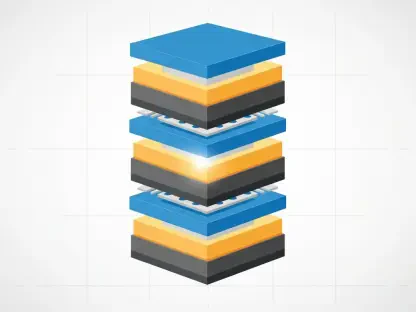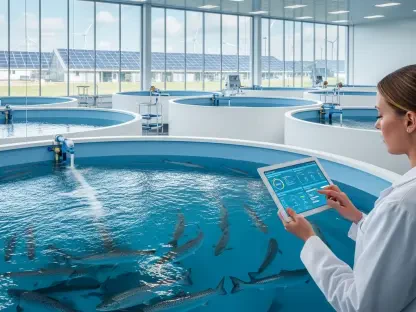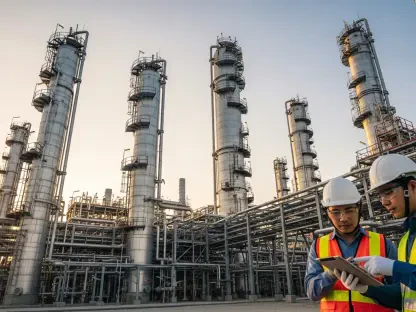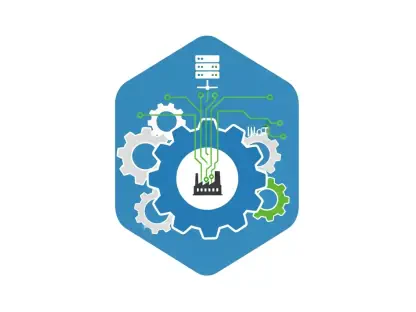The subject of analysis in this article is the robust and dynamic China textile chemicals market. This market is forecasted to extend its dominance, fueled by rising exports and domestic consumption, along with an increased emphasis on sustainable practices through 2029. Textile chemicals are indispensable in various stages of textile production, such as dyeing, printing, and finishing, significantly contributing to the durability, appearance, and functionality of textiles. China’s prominence in this sector continues to grow, driven by soaring domestic demand for high-quality textile products and a wide-reaching export market. The country’s steadfast commitment to research and development (R&D) in the chemical sector further bolsters the growth of the textile chemicals market, enabling companies to offer innovative and eco-friendly solutions that match the ever-evolving industry requirements.
Rising Demand and Export Market
China’s textile chemicals market is experiencing significant growth due to the increasing domestic demand for high-quality textile products. The country’s vast population and rising disposable income levels have led to a surge in the consumption of textiles, driving the need for advanced textile chemicals. Additionally, China’s strong export market plays a crucial role in the expansion of the textile chemicals industry. The ability to produce and export large quantities of textiles to global markets has solidified its position as a leader in the industry. The export market for Chinese textiles is vast, with products reaching various regions worldwide. This extensive reach has created a continuous demand for textile chemicals that enhance the quality and durability of exported goods. As a result, manufacturers are investing in innovative chemical solutions to meet the stringent quality standards of international markets. The combination of rising domestic consumption and a thriving export market ensures sustained growth for China’s textile chemicals industry.
China’s textile chemicals market is also benefiting from its strategic position in the global supply chain. The country’s ability to offer competitive pricing and maintain high production quality standards makes it an attractive partner for international textile manufacturers. Moreover, the ongoing trade relations with other major economies allow for a steady flow of chemical exports, which in turn supports further investment and innovation within the sector. This symbiotic relationship between domestic demand and export capabilities creates a resilient market framework that is likely to withstand global economic fluctuations. In addition to economic factors, government initiatives aimed at modernizing the textile industry are also contributing to the market’s growth. Policies that encourage the adoption of advanced technologies and sustainable practices are helping to future-proof the industry against upcoming challenges. This multifaceted growth trajectory indicates that China’s textile chemicals market will continue to thrive, driven by both internal and external factors.
Commitment to Research and Development
China’s commitment to research and development (R&D) in the chemical sector is a driving force behind the growth of the textile chemicals market. The focus on innovation has led to the development of advanced and eco-friendly chemical solutions that cater to the evolving needs of the textile industry. By investing in R&D, Chinese companies can stay ahead of global trends and offer cutting-edge products that meet the highest standards of quality and sustainability. The emphasis on R&D has also enabled Chinese manufacturers to develop specialized chemicals for various stages of textile production, such as dyeing, printing, and finishing. These chemicals play a crucial role in enhancing the appearance, durability, and functionality of textiles. As the industry continues to evolve, the ongoing investment in R&D will ensure that China remains at the forefront of textile chemical innovation.
Investment in R&D is not just a strategic move but a necessity to meet the diverse needs of today’s textile industry. With consumer demands shifting towards sustainable and performance-focused textiles, the chemical formulations must also adapt to meet these new requirements. Innovations in areas like nanotechnology, bio-based chemicals, and smart textiles are expected to be the next frontier for the industry. Leading Chinese companies are thus establishing partnerships with academic institutions and global research entities to broaden the scope and impact of their R&D initiatives. Furthermore, the focus on creating eco-friendly solutions aligns with the global push towards sustainability. This not only opens new markets that prioritize green products but also ensures compliance with increasingly stringent environmental regulations worldwide.
Emphasis on Environmental Sustainability
Environmental sustainability has gained global traction, urging the textile industry to adopt greener production methods. Consequently, the textile chemicals industry is under stringent environmental regulations, prompting manufacturers to invest in eco-friendly chemicals and processes aimed at reducing the environmental impact without undermining product quality. This shift towards sustainability responds to environmental concerns and unveils new growth opportunities for China’s textile chemicals market. Manufacturers are increasingly focusing on developing sustainable chemical solutions that minimize the environmental footprint of textile production. These eco-friendly chemicals are designed to reduce water and energy consumption, lower emissions, and minimize waste. By adopting sustainable practices, Chinese textile chemical manufacturers can meet the growing demand for environmentally responsible products and gain a competitive edge in the global market.
The emphasis on environmental sustainability is not limited to manufacturing practices but extends to the entire lifecycle of textile products. From raw material sourcing to end-of-life recycling, every stage is being scrutinized for potential improvements in sustainability. This holistic approach ensures that the impact on the environment is minimized, fostering greater acceptance among environmentally conscious consumers. Incentives from the government also play a crucial role in this transition. Policies encouraging the use of green technologies and materials are being enacted to drive the industry towards more sustainable practices. The sector’s commitment to sustainability is expected to yield long-term benefits, strengthening China’s position as a global leader in textile chemicals.
Technological Advancements in Digital Printing and Inkjet Technology
A pivotal trend driving the transformation in China’s textile chemicals market is the rapid advancement in digital printing and inkjet technology. These innovations are reshaping the textile industry and opening numerous avenues for growth and innovation. The burgeoning adoption of digital printing technologies in the textile sector enhances reduced time-to-market, design flexibility, and lower environmental impact compared to traditional printing methods. Advancements in inkjet technology, with its high precision capabilities, facilitate intricate designs and patterns on textiles and more efficient chemical utilization, reducing waste and production costs. This technological evolution has significantly impacted China’s textile chemicals market. The shift towards digital and inkjet printing escalates the demand for specialized textile chemicals, such as digital inks and pigments. Consequently, manufacturers are keen on developing innovative chemical solutions to cater to this growing demand.
The integration of digital printing and inkjet technology into textile production is not just about improved aesthetics but also operational efficiency. These technologies allow for shorter production runs and quicker turnaround times, meeting the fast-fashion demands of today’s consumers. Efficiency in chemical utilization means reduced waste and lower environmental impact, aligning well with the industry’s sustainability goals. Furthermore, the precision offered by inkjet technology ensures that less ink and water are wasted, translating to significant cost savings. As a result, the textile chemicals market is seeing an increased focus on developing chemicals that are compatible with these advanced technologies. The ability of digital and inkjet printing technologies to produce complex, multi-color designs with high accuracy is revolutionizing the textile industry. This is enabling designers to push creative boundaries and offer unique products without the constraints of traditional printing methods. This paradigm shift is expected to sustain the demand for specialized chemicals and drive further innovations in the sector.
Segmental Insights: Apparel Segment Growth
Segmental insights reveal that, based on application, the apparel segment is projected for rapid growth during the forecast period. This is attributed to the rising population in China and increasing disposable income, leading to a significant surge in demand for apparel. Higher affordability drives the need for textile chemicals necessary for clothing production meeting the rising production requirements. Simultaneously, evolving consumer preferences towards synthetic apparel demand specific textile chemicals to achieve desired properties and performance in garments. This shift makes the apparel segment dominant in the textile chemicals market, reflecting consumer preference for synthetic apparel. China’s emergence as a leader in world apparel production is due to its advantage of low-cost labor, significantly fueling apparel production and driving continuous demand for textile chemicals.
The growth in the apparel segment is not limited to domestic markets but extends to international arenas as well. China’s ability to produce high-quality apparel at competitive prices makes it a preferred choice for global brands looking to outsource their production. This global outreach fuels further demand for textile chemicals, particularly those that enhance the durability and aesthetic appeal of apparel. Innovations in fabric treatments, including wrinkle resistance, water repellency, and anti-microbial properties, are increasingly sought after. These specialized chemicals are crucial in meeting the diverse needs of consumers around the world. Coupled with the rising trend of online shopping, the apparel segment is experiencing an unprecedented demand spike.
Regional Insights: South Central China Dominance
China’s dedication to research and development (R&D) in the chemical industry significantly drives the textile chemicals market. Their focus on innovation has resulted in advanced and environmentally friendly chemical solutions tailored to the textile sector’s dynamic requirements. By heavily investing in R&D, Chinese companies can anticipate global trends and provide state-of-the-art products meeting top-notch quality and sustainability standards. This commitment has also enabled manufacturers to create specialized chemicals for dyeing, printing, and finishing textiles, enhancing their appearance, durability, and functionality. As the industry evolves, continued R&D investments will keep China at the leading edge of textile chemical advancements.
R&D investment is crucial to meet today’s diverse textile industry demands. With consumers increasingly seeking sustainable and high-performance textiles, chemical formulations must evolve accordingly. Innovations in nanotechnology, bio-based chemicals, and smart textiles represent the industry’s future. Prominent Chinese firms are forming partnerships with academic institutions and global research organizations to expand their R&D impacts further. The focus on eco-friendly solutions aligns with the worldwide sustainability movement, opening new markets for green products and ensuring compliance with stringent environmental regulations.









